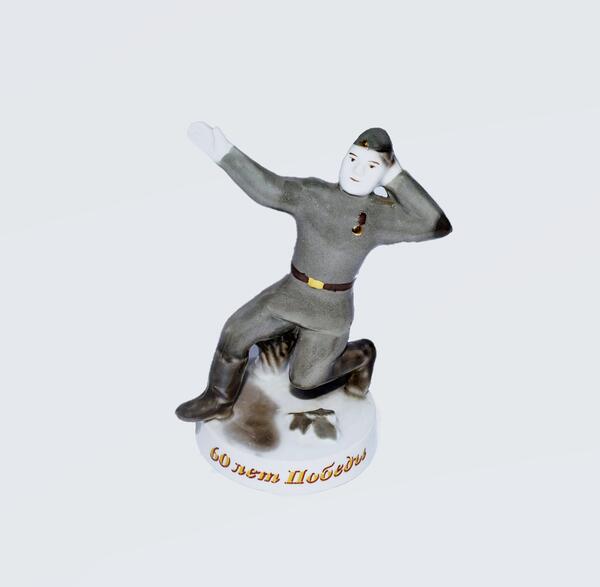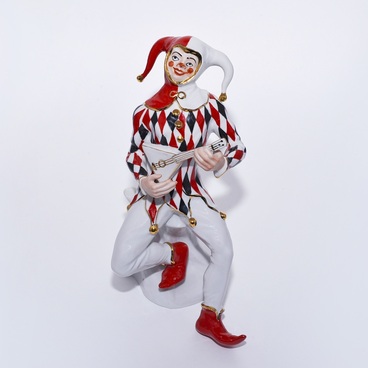The sculptor Alexander Ravkin created the table sculpture “Soldier” at the “Proletary” porcelain factory in 2005. Its launch was timed to the celebration of the 60th anniversary of the end of the Great Patriotic War.
Ravkin chose the image of a smiling soldier to illustrate the joy of the Victory. The sculptor depicted him dancing with his knees slightly bent. The soldier holds one hand behind his back and stretches the other hand aside.
The soldier wears a military uniform and kirza (artificial leather) boots. Alexander Ravkin used different shades of brown and gray. The figurine was painted in underglaze technique that was rarely used at the factory in the 1990s — 2000s. It was difficult to achieve the desired color because after firing and glazing the painting changed its shade. Ravkin painted the item and then fired it at a high temperature — about 1350° C. It was important to make sure that the pigment stayed dense and thick and did not spread over the surface of the item during the process of painting and firing.
When applied correctly, the underglaze technique results in translucent, soft colors. However, the final look depended crucially on the quality of the paints — they had to be heat-resistant and should not mix with glaze or porcelain.
Novgorod and its architectural monuments were almost entirely destroyed during the Great Patriotic War. As early as July 1941, German fascist forces surrounded the city and started air attacks on railway stations and other important objects.
During the war years, the enemy forces destroyed about 80 thousand buildings in the city — apartment and industrial buildings, warehouses, schools, clubs, theaters, libraries, and hospitals. The city lost 14,703 inhabitants, and 166,217 people were taken captive. The Germans destroyed large enterprises of all-union significance in the region: match factories named after Lenin and “Proletarskoe Znamya”, the “Vosstanie” glass factory, the “Krasny Farforist” factory, the porcelain and faience factory “Comintern” in the Chudovsky district, the plywood factory in the Parfino village and others.
The “Proletary” factory was evacuated to Krasnoyarsk, but in the spring of 1944, when the workers returned to their sites, all the workshops had been destroyed. The artisans had to resume production from scratch, and in January 1945, the factory produced its first goods.



